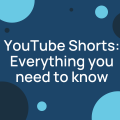Brand storytelling: what is it like today?
Sahail Ashraf posted on 19 July 2022
As a follow up to one of our most popular posts, we take a look at more examples of great brand storytelling on social media.

Back in 2018, Locowise published a piece on brand storytelling. It resonated with a lot of marketers, and this year we thought we would take a look back at recent examples of storytelling by brands, to see how the approach has grown.
Back then, we said:
“If brands want to get the very best out of social media at some point they will have to embrace the art of storytelling. This is a key aspect of a brand’s survival on platforms as diverse as Pinterest and Twitter, Facebook and LinkedIn. Get storytelling right and you will find that more people sign up to your story, your brand.“
It’s arguable that Pinterest doesn’t quite fit into that particular group anymore, but the concept of brand storytelling works across all channels, including websites.
Patagonia
Here we have a brand that has a deep and involved story behind it. Patagonia sells outdoor clothing and accessories. You will find them all available to buy on the site.
However, Patagonia takes storytelling to another level. The company has clear views on climate change and the outdoors life, but visit the site and you will see, in the top right, a button that says ‘stories’.
The Patagonia team has picked stories written by people who relate to the company values. So you’ll find what is effectively journalism on climate issues, as well as a personal essay on motherhood. It’s fascinating stuff, and speaks to the way Patagonia has such a strong brand that personal stories fit into the website content easily and smoothly.
It has an ‘Earth tax’ that it has imposed upon itself. There is a tab labeled ‘activism’, and you can buy clothes if you want. But the catalog, huge as it is, almost seems secondary to the clear mission and story the brand is trying to express. You don’t get many examples of brands with such a strong identity, and such careful storytelling.
The impact is clear. With Patagonia, customers can expect an earthy, caring family-driven experience.
Google isn’t really looking for more views and visits, it has a strong brand story. And every year it has shown that it understands the part it plays in people’s lives.
Every year, Google produces a video called ‘Year in search’, where it condenses the previous calendar year through the most popular search terms. This naturally ‘tells the story’ of the previous year, and as every year has highs and lows in it, it is a riveting and emotional watch, every time.
As you can imagine, the video for 2021 is an emotional piece.
There are no brand pushes here. Google has nothing to prove and nothing to gain. What it is doing here is simply telling a story. The approach shows how social media can present stories that resonate and engage people, whether they are for making a profit or for raising awareness.
Apple
Another brand that arguably doesn’t need massive publicity, Apple has scored a real win with their #shotoniphone campaign. You can see the best examples of this approach on Instagram, where Apple collects a ton of user generated content.
This is great in itself, because user generated content is perfect for building engagement. But since Apple doesn’t necessarily need more engagement, let’s focus on the storytelling here. By using all of that content, a story does emerge. Each photograph is completely unique, and gives an insight into everyday life. The end result is a tapestry, a story that still hasn’t finished, and that will continue to surprise audiences.
The message? Apple is trying to say that it has a part to play in our story. And that means it has an immediate connection with its audience. It’s rather clever.
McDonalds
Possibly one of the trailblazers in the world of social media marketing storytelling, McDonalds had a campaign a little while ago that really exemplified the idea of weaving a narrative that resonated with and engaged audiences.
The ‘Hands Full’ narrative videos (3 of them) showed families and how innovations in McDonalds and its service helped those families negotiate key milestones in life, including the birth of a baby. The original Hands Full video, for example, showed a young couple struggling with the highs and lows of becoming parents, and how McDonalds made it a little bit easier.
The fact that the videos worked so well and told a convincing story while also containing a clear branding message is testament to McDonald’s mastery of social media storytelling. The audience is interested in the story, and the message conveys trust and familiarity. Effectively, McDonalds is on the same journey that ordinary people pursue through life, and that is why the campaign worked so well.
All the above exemplify quality storytelling and how it helps to convey feelings that audiences relate to. Storytelling isn’t difficult, and when it is done well, it can linger in the memory for a very long time. And that is the sign of great marketing.
Are you a social media marketing professional? That’s great news. Locowise and you are meant for each other. Give it a try here. And check out our new TikTok reporting too, while you’re at it.






